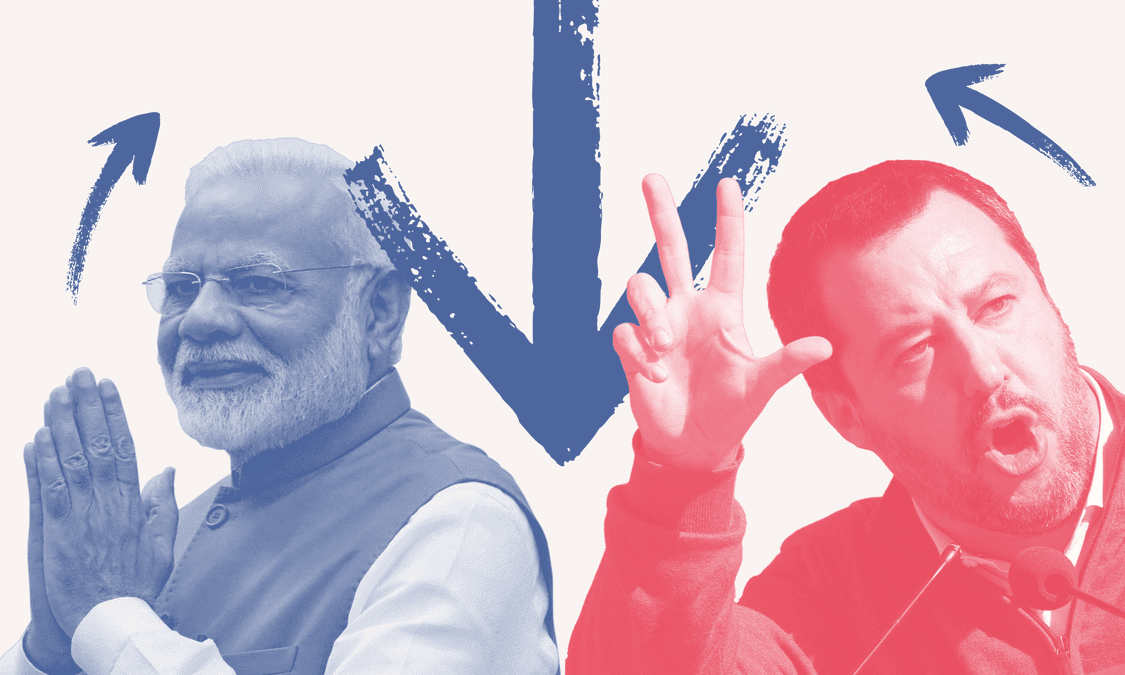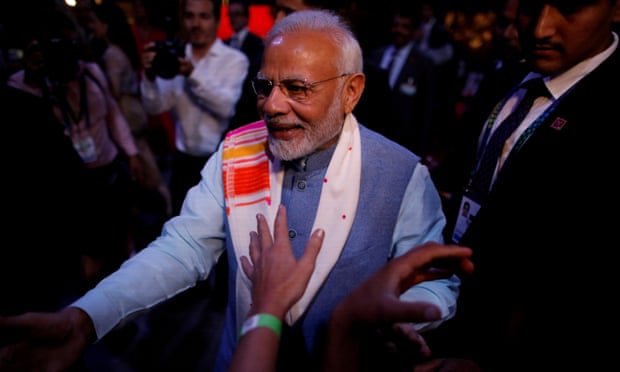- UID
- 20
- Online time
- Hours
- Posts
- Reg time
- 24-8-2017
- Last login
- 1-1-1970
|
Matteo Salvini’s caustic rhetoric carried him to power, but is Narendra Modi’s gentler approach just as effective?

India’s Narendra Modi and Italy’s Matteo Salvini have used social media in different ways to consolidate their positions.
▼ When he received the phone call from the leader of the far-right League party, Edoardo Della Barbara knew he had won an elaborate Facebook contest. It was February – in the midst of Italy’s general election campaign – and Della Barbara was the latest follower to like the most posts by Matteo Salvini in the shortest amount of time.
“I knew it was linked to building engagement through social media,” said Della Barbara, a 22-year-old university student from Milan.
The prize was a 10-minute one-on-one call with Salvini, which Della Barbara used to talk about his studies, his family’s business and his hope to see reduced taxes on electronic cigarettes. “It was interesting, as doing politics in this way had never been done in Italybefore.”
“Who will win? Salvini will,” the party leader said in one Facebook video promoting the contest. “The others have newspapers, television, banks and corporate cash … we have you, we have the network … so long as it remains free.”
Salvini is not the only populist, on the left or right, to prove adept at innovating with social media. Silicon Valley has given politicians of all stripes the ability to bypass traditional media outlets, communicate directly with voters and sculpt their own image without interference from journalists.
Jair Bolsonaro, Brazil’s president-elect, benefited from viral WhatsApp messaging, while Facebook was turned into a weapon against opponents of the Philippines president, Rodrigo Duterte. And after reaching the White House on the back of a tweet-fuelled campaign, Donald Trump famously said: “Maybe I wouldn’t be here if it wasn’t for Twitter.”
But it is another nationalist, populist leader – India’s Narendra Modi – who has the largest combined following on Facebook, Twitter and Instagram of any politician in the world, at more than 100 million. The prime minister’s approach to social media contrasts sharply with Salvini’s homespun Facebook updates and Trump’s typo-ridden tweets.
Modi combines a steady stream of upbeat announcements with occasional, gentle jabs at his his opponents. It is a restrained approach that suits Modi, and has helped him rebrand his persona, from hardline nationalist to populist champion of India’s technologically connected middle-class.
Benjamin Moffitt, a senior lecturer at Australian Catholic University, said there was no uniform use of social media among populists. But there was a new generation of populist leaders who were using digital communication tools with “more skill and efficacy” than their rivals. “Their Twitter feeds, Facebook pages and so forth often have more shares, likes and fans than their opponents, and are often far more entertaining and engaging.”

Narendra Modi greets attendees at an event ahead of the G20 summit in Buenos Aires. Photograph: Andres Martinez Casares/Reuters
‘You never see this on the TV news’
Salvini’s use of social media has intensified in the six months since he became deputy prime minister in June, a period in which his profile and popularity has steadily increased. That can be attributed in part to his use of Facebook and Instagram, which he uses to cultivate his public persona.
In one recent five-day period, Salvini’s Facebook page included a post defending crucifixes (▪ ▪ ▪)
► Please, read the full note/article here: Source |
|